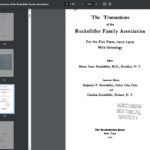Tucked into the newly enacted state budget is a provision that could boost the amount of housing built around Penn Station, if the neighborhood’s redevelopment ever gets off the ground.
The much-publicized housing deal in last week’s budget includes a measure to lift the state-imposed limit on residential density in the city, allowing for bigger apartment buildings. The changes scrap a decades-old cap on floor-area ratio, which had banned buildings whose square footage was more than 12 times the size of the lot they occupied.
Not only can the city now approve its own buildings whose FAR exceeds 12, the state budget added another provision: the state-run authority Empire State Development could also allow the denser apartment buildings in future projects it undertakes. That could have an impact on the state’s stalled Penn Station-area megaproject, where the amount of housing has been a main sticking point.
The most recent 10-tower plan, unveiled by Gov. Kathy Hochul in 2021, would include about 1,800 apartments, although a vast majority of the project would still be taken up by offices. In 2021 planning documents, ESD noted that it was constrained by the 12 FAR cap — for example, a site at the southwest corner of West 31st Street and Eighth Avenue could accommodate more than its planned 542 apartments if the cap were lifted, the documents stated.
Midtown residents opposed to the state plan have pushed for it to be dropped or changed to prioritize housing, given the city’s desperate apartment shortage and the dismal office market. But any changes might depend on the whims of Vornado Realty Trust, the state’s chosen developer in the project, which controls much of the land and has given no public sign it wants to switch to residential.
Still, some in the neighborhood are heartened by the budget language.
“This will increase the opportunity for affordable housing at the Penn Station sites, like the Hotel Pennsylvania,” said Assemblyman Tony Simone, who represents the area.
Indeed, the state budget language says state-led projects can exceed 12 FAR only if at least 25% of the new apartments are affordable, renting at an average of 80% of the area median income. The future developments also cannot occupy the same lot as a building designated as an artists’ live-work, and must include a “feasible method” for relocating any residents displaced by the project.
It’s unclear who pushed for the new flexibility for state projects in the budget. State Sen. Liz Krueger, who also represents the Penn area and played a leading role in budget negotiations, told Crain’s she assumes it came from Hochul’s office, since the change was not included in Mayor Eric Adams’ budget requests, she said. (Hochul’s office did not respond to a request for comment.)
The budget specifically allows for denser housing in “general project plans,” the term for all state-led developments that override local laws in order to build. Although GPPs have always been unconstrained by city regulations like zoning, they were still hamstrung by the FAR cap, since the cap came from the state’s own multiple dwelling law.
It’s far from clear when, if ever, the broader Penn Station plan will stir back to life, after Hochul confirmed last year that she was “decoupling” the rebuild of the train station itself from the real estate project surrounding it. Both Hochul’s administration and Vornado have said the neighborhood-wide plan remains very much alive, albeit without a timeline for construction.
Simone said he and other Midtown officials planned to push Hochul in the coming weeks to put urgency behind the Penn plan, citing the importance of trying to win federal funds while President Biden is in office.
Diana Gonzalez, executive director of the neighborhood group New Yorkers for a Better Penn Plan, argued that the lifted cap means more housing could be built quickly around the rail hub — including on the former Hotel Pennsylvania site where Vornado has recently floated building an outdoor space suitable for Fashion Week events or tennis matches.
“There’s no reason to wait years for luxury office buildings or tennis courts when we could build the housing we desperately need right now,” Gonzalez said in a statement.
Nick Garber , 2024-04-29 11:48:05
Source link


